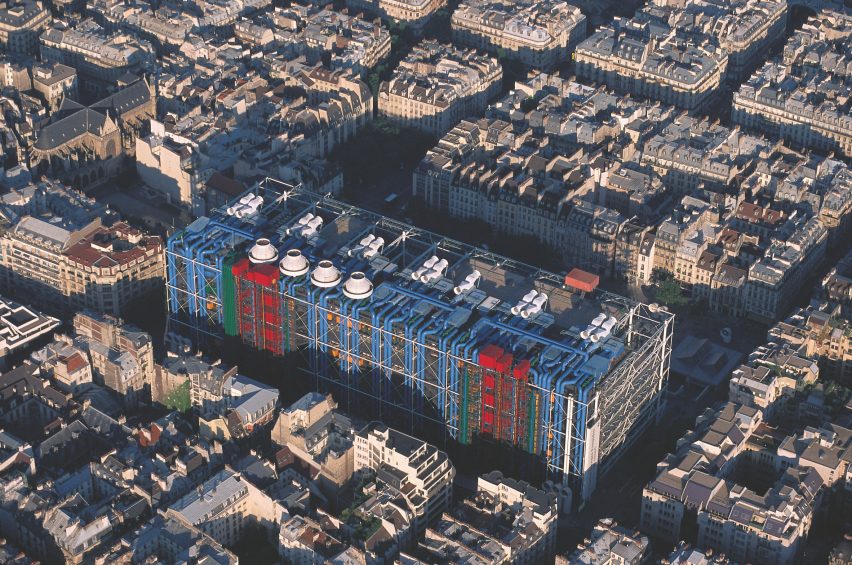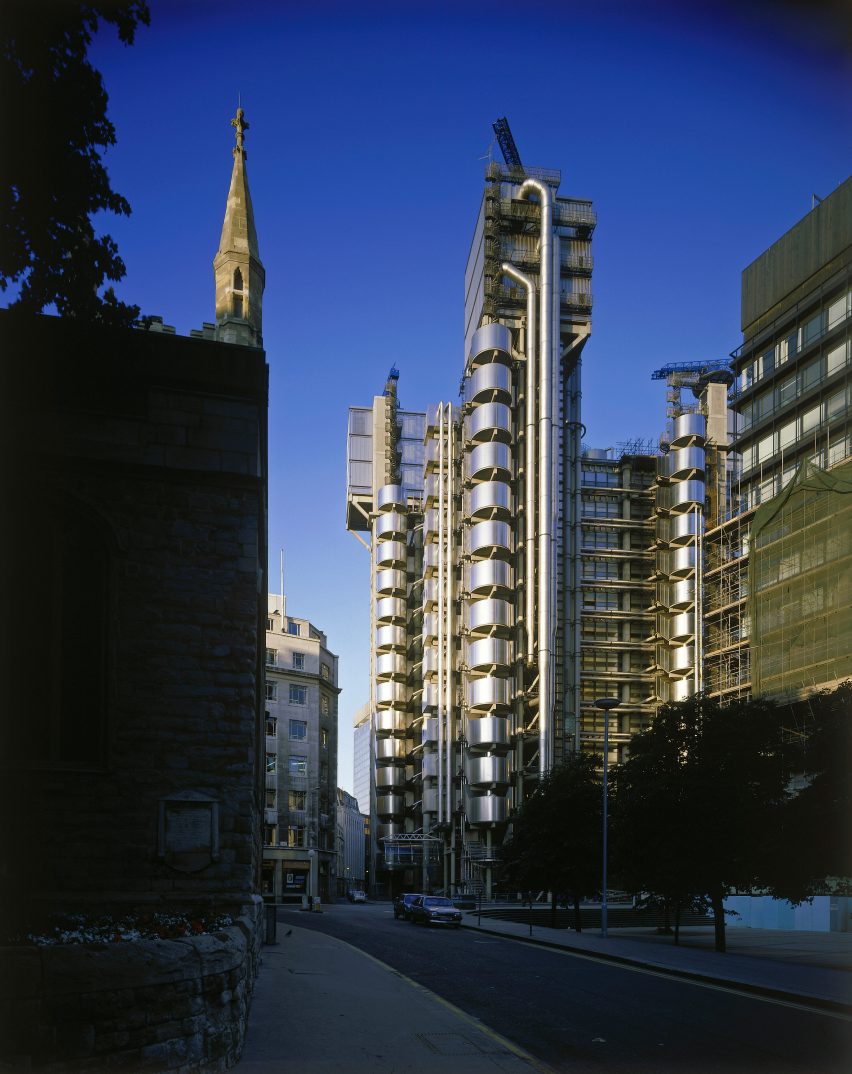"I would like to think that my ethics may continue" said Richard Rogers in 2013 video interview
Renowned British architect Richard Rogers, who died on Saturday, reflected on his legacy and told the stories behind his Centre Pompidou in Paris and Lloyd's building in London in this video interview filmed by Dezeen in 2013.
In the short film, the Pritzker Prize-winning architect discusses his practice Rogers Stirk Harbour + Partners, his key influences and the ups and downs of a career that spanned half a century.
The interview was filmed at RSH+P's offices in London in 2013 ahead of the opening of Inside Out, a retrospective exhibition of his work at the Royal Academy in London.
At the time, Dezeen published a series of videos in which the architect spoke about his key projects.
This edit focuses on two early projects that helped to launch Rogers' career: the 1977 Centre Pompidou in Paris and the 1986 Lloyd's building in London.
"I would like to think that my ethics may continue"
Rogers studied at the Architectural Association in London and Yale School of Architecture in New Haven, USA.
After graduating in the 1960s, the collective Team 4, which comprised Rogers alongside Norman Foster, Wendy Cheeseman and Su Brumwell, went on to pioneer high-tech architecture.
In 1977, the British architect set up his own practice Richard Rogers Partnership, which was renamed Rogers Stirk Harbour + Partners in 2007.
The practice is owned by a charity and abides by a constitution that redistributes profits amongst employees and other charitable bodies.
Rogers Stirk Harbour + Partners also boycotts work that involves the military, incarceration or arms manufacturers, opting instead for socially driven projects.
"At 80, you can see an end will be coming," Rogers said in the video. "But I would like to think that my ethics may continue."
Architects "have a responsibility to society," he added. "And that gives us a role as architects that is more than just answering the client but also to answer the passerby and society as a whole."
The Italian-born architect immigrated to Britain with his family in 1939. In addition to negative Italian stereotypes, the architect also had difficulty with his then-undiagnosed dyslexia.
"Those gave me a lot of problems for the first 30 years," said Rogers. "But the last 30 years have been fantastic."
"I often say I enjoyed myself much more in the last third of my life than I have in my first third," he added.

Centre Pompidou, Paris, France (1977)
Completed in 1977, the Centre Pompidou is a landmark art gallery and cultural centre located in Paris' fourth arrondissement.
The high-tech building, which was designed in partnership with Italian architect Renzo Piano, has received widespread critical acclaim but was initially met with hostility from the locals.
"I remember once standing outside on a rainy day and there was this small woman with an umbrella," Rogers recalled in the video. "She said: 'What do you think of this building?' And, stupidly, I said: 'I designed it,' and she hit me on the head with the umbrella."
Since its completion, the Centre Pompidou has had more than 150 million visitors and it is now celebrated as one of Paris' most important cultural landmarks.

Lloyd's building, London, UK (1986)
Built in 1986 as the headquarters of insurance firm Lloyd's of London, the inside-out building represents Rogers' return to architectural practice after work dried up.
"We took about seven years to build the Centre Pompidou," said Rogers. "At the end of it, there was no other work. Nobody wanted another Centre Pompidou".
The steel-and-glass tower, which has mechanical services on its exterior, was designed in response to a competition by Lloyd's calling for a modern building that could stand the test of time.
"Lloyds said they wanted two things: they wanted a building that would last into the next century – we made that one – and they wanted a building that would meet their changing needs," said Rogers.